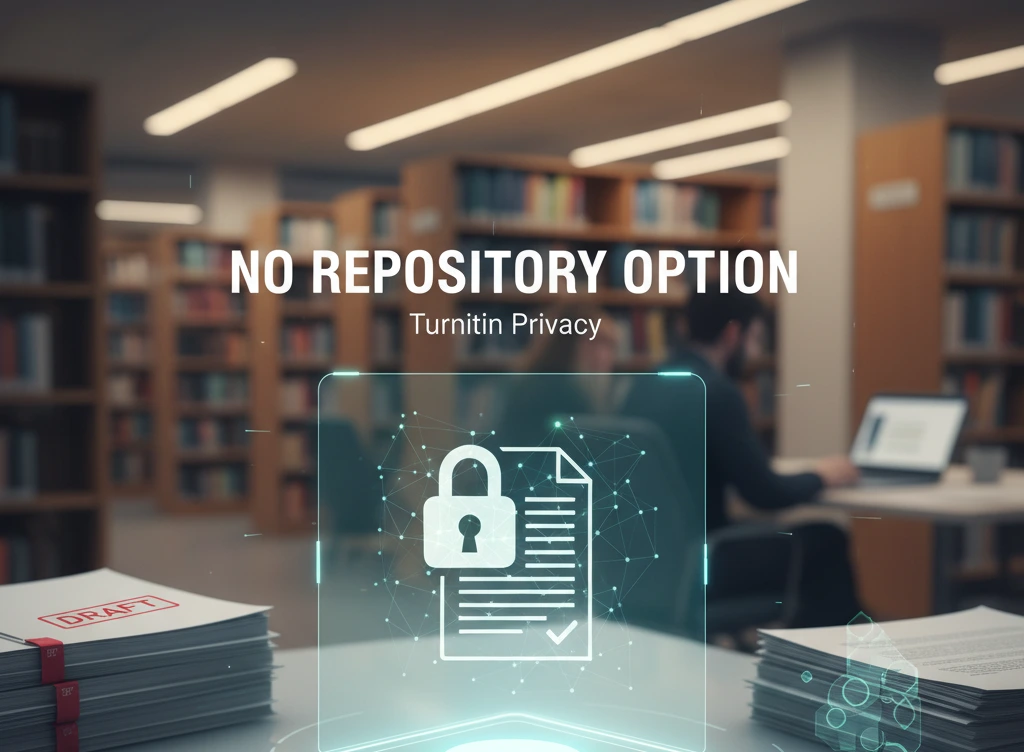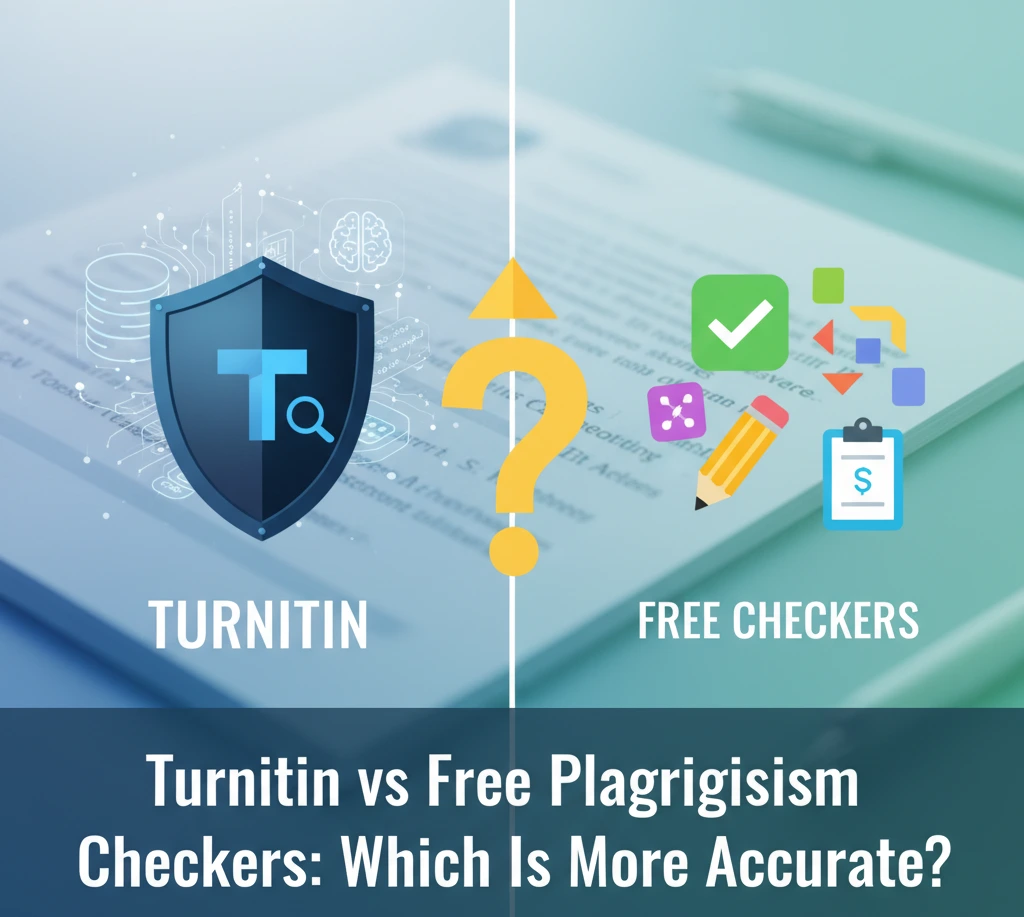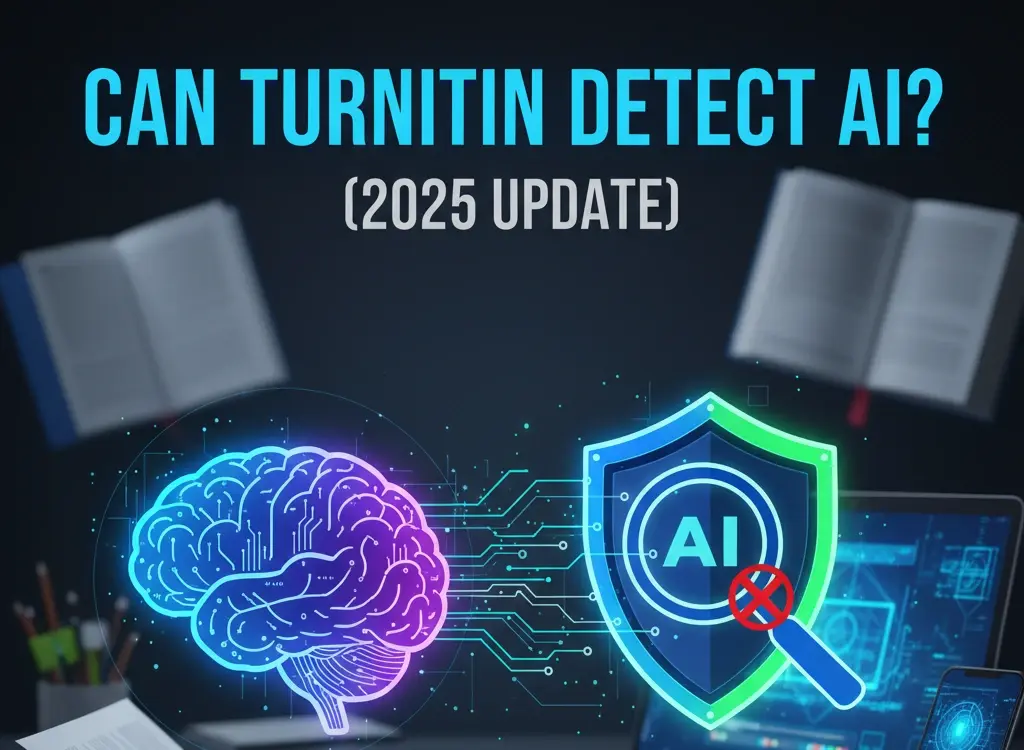Turnitin is an indispensable tool in academic settings, designed to help students develop their original writing skills and uphold academic integrity. However, for many, the Turnitin similarity report can be a source of confusion and anxiety. When Turnitin highlights text, it’s not always a definitive judgment of plagiarism. Often, those highlighted sections represent correctly paraphrased content or appropriately attributed direct quotes.
Misinterpreting your similarity report can lead to unnecessary worry or, more critically, missed opportunities to learn proper academic writing integrity. This comprehensive guide will demystify how Turnitin distinguishes between genuine plagiarism, acceptable paraphrasing, and correctly cited direct quotations, empowering you to understand and interpret your reports with confidence.
Understanding Turnitin’s Similarity Report
At its core, Turnitin functions as a sophisticated text-matching software. When you submit a paper, Turnitin scans your document and compares it against an enormous database comprising:
- Billions of web pages (both current and archived)
- Previous student papers submitted to Turnitin
- A vast collection of academic journals, publications, and books
After this comparison, Turnitin generates a similarity report, which provides a percentage score indicating how much of your text matches sources in its database. Crucially, it also highlights the matching text and links back to the original sources.
It’s vital to understand that a high Turnitin similarity report percentage does not automatically equate to plagiarism. Instead, it serves as an indicator for you and your instructor to review. The report simply shows where your text aligns with existing content; the interpretation of whether that alignment constitutes plagiarism, proper paraphrasing, or a direct quote rests on how you’ve used and attributed those matches.
What Counts as Plagiarism in Turnitin
Plagiarism, in its simplest definition, is presenting someone else’s ideas or words as your own without proper attribution. Turnitin is highly effective at identifying various forms of plagiarism, including:
- Direct Copying Without Attribution: This is the most straightforward form of plagiarism, where a student copies sentences or paragraphs verbatim from a source without using quotation marks or citing the original author. Turnitin will highlight these exact matches.
- Patchwriting: Also known as “mosaic plagiarism,” this occurs when a student tries to paraphrase but only makes minor changes to the original text, such as substituting a few words or rearranging sentence structure, while retaining too much of the original phrasing and structure. Even with a citation, if the text is too close to the source, it can still be considered plagiarism because it doesn’t demonstrate original thought or proper understanding.
- Uncredited Paraphrasing: Even if you genuinely put an idea into your own words, failing to cite the original source from which the idea came is a form of plagiarism. Turnitin may still highlight the similarity in ideas or common phrases, signaling a potential issue.
Turnitin highlights uncredited matches and copied text, often assigning higher similarity percentages to these sections. For instance, if you copied a paragraph directly from Wikipedia without quotation marks or a citation, Turnitin would flag it as a significant match, linking directly to the Wikipedia article.
Here’s an example of how Turnitin might detect plagiarism:
Original Source: “The rapid advancement of artificial intelligence has sparked widespread debate regarding its ethical implications, particularly concerning data privacy and autonomous decision-making systems.”
Plagiarized Text (Direct Copy without citation): “The rapid advancement of artificial intelligence has sparked widespread debate regarding its ethical implications, particularly concerning data privacy and autonomous decision-making systems.” Turnitin would highlight this entire sentence as a direct match.
Plagiarized Text (Patchwriting): “Artificial intelligence’s swift progress has ignited extensive discussion about its moral consequences, especially regarding privacy of data and self-governing choices.” Turnitin would likely highlight most of this sentence due to its close structural and lexical similarity to the original, even with minor word changes.
Understanding these nuances is crucial for developing strong academic writing integrity.
What Is Paraphrasing and How Turnitin Sees It
Proper paraphrasing involves taking someone else’s idea or information and expressing it entirely in your own words, with your own sentence structure, while retaining the original meaning. It demonstrates that you understand the source material and can integrate it into your own work.
When done correctly, paraphrasing significantly contributes to your paper’s originality and shows critical engagement with sources. However, Turnitin can still highlight properly paraphrased content. Why?
Turnitin’s algorithm detects text similarity, not intent. If your paraphrased content uses many of the same keywords or phrases, or if the sentence structure remains too close to the original, Turnitin’s software will identify these textual matches. This doesn’t necessarily mean you’ve plagiarized; it simply means Turnitin found similar wording.
Examples of effective vs. poor paraphrasing:
Original Source: “Students frequently overuse direct quotation in their essays, perhaps because they lack confidence in their own writing ability or are unsure how to properly integrate source material.”
Poor Paraphrasing (too close to original, potential patchwriting): “Students often use too many direct quotes in their essays. This may be because they are not confident in their writing skills or don’t know how to integrate sources correctly.” Turnitin would likely highlight a substantial portion here due to similar vocabulary and sentence flow.
Effective Paraphrasing (demonstrates understanding, uses new structure and vocabulary, requires citation): “According to (your source), many students incorporate an excessive number of direct quotations into their academic papers, possibly due to a lack of self-assurance in their writing capabilities or an unfamiliarity with integrating external information appropriately.” Turnitin might still highlight some common terms, but the overall structure and vocabulary are distinct, making it less likely to be flagged as plagiarism if properly cited.
The key for plagiarism vs paraphrasing in Turnitin’s eyes is the degree of textual overlap and, critically, whether a proper citation is present. Even with a good paraphrase, you must cite the source. Forgetting to cite paraphrased sections is a common mistake that raises Turnitin similarity.
Direct Quotes and Proper Citation
Direct quotes are exact reproductions of an author’s words, enclosed in quotation marks and accompanied by a precise citation (including page or paragraph numbers where applicable). Turnitin is designed to recognize and account for properly formatted direct quotes.
When you enclose text in quotation marks, Turnitin’s algorithm generally understands that you are indicating borrowed language. Most instructors configure Turnitin to exclude quotes from the similarity percentage calculation, provided they are correctly formatted within quotation marks.
However, simply putting text in quotation marks isn’t enough; you must also provide a citation according to your chosen style guide (e.g., APA, MLA, Chicago). If quotes are used without citation, they will still be flagged as plagiarism.
How Turnitin detects quotations: Turnitin identifies text enclosed by standard quotation marks (” “) or sometimes even block quotes (for longer passages). If your instructor has set up the assignment to exclude quoted material, these sections will often appear in the report but won’t contribute to the overall similarity score.
Acceptable percentage for quotations: While Turnitin can exclude quotes, overusing them can still be detrimental to your paper’s originality and flow. There isn’t a universal “acceptable percentage” for quotations, as it depends on the discipline, assignment, and instructor’s expectations. Generally, academic writing emphasizes analysis and synthesis, meaning your own voice and interpretation should dominate. Relying too heavily on quotes suggests a lack of your own analysis.
Short examples of quoted vs. unquoted sentences:
- Unquoted (Plagiarism if not your own words): The sky was a vibrant canvas of deep blues and purples.
- Quoted (Proper if cited): As Smith observed, “The sky was a vibrant canvas of deep blues and purples” (2022, p. 15).
- Quoted (Proper, block quote for longer passages):The impact of climate change on global ecosystems is undeniable, with observable shifts in weather patterns, species distribution, and ocean acidity becoming increasingly prevalent across all continents. (Jones, 2023, p. 45)
This differentiation is key when interpreting Turnitin report results.
How to Balance Paraphrasing and Quoting in Academic Writing
Achieving the right balance between paraphrasing and direct quoting is a hallmark of sophisticated academic writing integrity.
When to quote directly:
- When the author’s exact words are particularly eloquent, impactful, or precise, and paraphrasing would diminish their power.
- When analyzing specific language, terminology, or an author’s unique phrasing.
- When providing textual evidence for interpretation in fields like literary analysis.
- When stating a definition from an authoritative source.
When to paraphrase:
- Most of the time! Paraphrasing demonstrates your understanding of the source material.
- When you need to integrate an author’s ideas into your own argument seamlessly without interrupting your flow with lengthy quotes.
- When summarizing a section or an entire article.
- When the original language is complex or technical, and you can explain it more clearly.
The importance of citation styles (APA, MLA, Chicago, etc.) cannot be overstated. Each style has specific rules for in-text citations and reference lists, ensuring that readers can easily locate your sources. Consistent and accurate citation is fundamental to avoiding plagiarism.
How balanced quoting improves originality and readability: A paper that relies too heavily on direct quotes often reads like a patchwork of other people’s ideas rather than an original argument. By contrast, a paper that strategically uses paraphrasing and integrates short, impactful quotes creates a more cohesive, original, and readable experience. It allows your voice to shine through while demonstrating your engagement with scholarly conversations.
Common Mistakes That Raise Turnitin Similarity
Even with good intentions, students often make errors that result in higher Turnitin similarity report scores. Being aware of these common pitfalls can help you avoid them:
- Forgetting to cite paraphrased sections: This is a major cause of unintentional plagiarism. Even if you completely reword an idea, if the idea itself came from a source, you must cite it. Turnitin will highlight these matches, and without a citation, they’ll be considered plagiarism.
- Overusing quotations: While Turnitin can exclude quotes, if your paper is dominated by them, it suggests a lack of original thought and analysis. Your instructor might still flag it, even if the similarity percentage is low due to quote exclusion.
- Poor rewording that retains too much of the source structure (Patchwriting): As discussed, merely changing a few words in a sentence or slightly altering the sentence order while maintaining the original’s core structure is insufficient. Turnitin is sophisticated enough to detect these close textual similarities, even if you attempt to “hide” them with a citation. This is often seen when students use a thesaurus to swap out words without truly understanding and rephrasing the entire concept.
- Citing incorrectly: While better than no citation, incorrect formatting (e.g., missing page numbers for direct quotes, incorrect author-date format) can sometimes lead to issues, especially if the instructor manually reviews the report for citation errors.
- Including the bibliography/references in the Turnitin scan: Many instructors set up assignments to exclude the bibliography or works cited page from the similarity report. If yours doesn’t, or if you accidentally include other template text, it can artificially inflate your similarity score.
- Submitting drafts that contain research notes or copied text meant for later paraphrasing/quoting: It’s a good practice to clean up your drafts before submitting to Turnitin, ensuring only your final, properly attributed content remains.
How to Read Turnitin Colors and Percentages
Understanding the visual cues in your Turnitin report is essential for interpreting Turnitin report results effectively.
Color codes: Turnitin uses a color-coding system to indicate the similarity percentage:
- Blue: No matching text
- Green: One word to 24% similarity
- Yellow: 25-49% similarity
- Orange: 50-74% similarity
- Red: 75-100% similarity
These colors offer a quick glance at the overall similarity. A green or yellow score is generally common, especially in well-researched papers, as it indicates properly cited information or common phrases. An orange or red score usually warrants closer inspection for potential plagiarism.
Please refer to this article for an in-depth guide on how to read and understand a Turnitin Similarity Report, including what each color means, how to interpret percentage ranges, and how instructors typically evaluate them.
It’s crucial to remember that Turnitin generates a report; it does not make a judgment. The final interpretation of the Turnitin similarity report always rests with your instructor. Different disciplines, assignments, and instructors will have varying expectations regarding acceptable similarity percentages. Some might expect a very low percentage, while others understand that a certain degree of overlap is unavoidable in specific fields or when quoting extensively from primary sources.
Focus on reviewing source matches rather than focusing only on total percentage: The most important part of the Turnitin report is not the overall percentage, but the detailed breakdown of the matches. You should:
- Click on each highlighted section: This will show you the source Turnitin matched your text against.
- Evaluate the match: Is it a direct quote that you properly cited? Is it a paraphrase that needs more rephrasing or a citation? Is it a common phrase or a properly referenced piece of information?
- Distinguish between intentional copying and acceptable academic practice.
Focusing solely on reducing the percentage can sometimes lead to “gaming” the system rather than learning proper academic writing integrity. Instead, use the report as a learning tool to refine your research, paraphrasing, and citation skills.
Conclusion
The Turnitin similarity report is a powerful educational tool, not merely a plagiarism detector. Understanding the fundamental differences between plagiarism, proper paraphrasing, and correctly attributed direct quotes is paramount for any student, researcher, or educator. Turnitin doesn’t automatically judge plagiarism; rather, it highlights textual similarities, empowering you to critically review your work and ensure academic honesty.
By learning how to effectively paraphrase, integrate direct quotes strategically, and cite your sources meticulously, you can not only navigate Turnitin reports with confidence but also develop strong, original academic writing integrity. Use your similarity report as an opportunity to refine your skills, ensuring your voice is heard clearly while properly acknowledging the scholarly conversation you’re contributing to. This understanding is key to succeeding in your academic journey and producing work of genuine value.
Frequently Asked Questions (FAQs)
What is the difference between paraphrasing and plagiarism in Turnitin? Paraphrasing is restating an author’s ideas in your own words and sentence structure with proper citation. Plagiarism is presenting someone else’s ideas or words as your own without proper attribution, which includes incorrect paraphrasing (e.g., patchwriting) or outright copying. Turnitin highlights textual matches, and your instructor interprets whether that match is a proper paraphrase or plagiarism based on attribution and originality.
Does Turnitin highlight paraphrased text? Yes, Turnitin can and often does highlight paraphrased text if it finds significant textual similarities in terms of vocabulary or sentence structure to a source in its database. This doesn’t automatically mean it’s plagiarism; it means you need to review whether your paraphrase is sufficiently distinct from the original and properly cited.
How does Turnitin detect quotations? Turnitin detects text enclosed in standard quotation marks (” “) and often block quotes. If your instructor has set the assignment to exclude quotes, these sections will appear in the report but typically won’t contribute to the overall similarity percentage, provided they are correctly formatted and cited.
Why is my similarity score high even with citations? A high similarity score even with citations can occur for several reasons:
- Overuse of direct quotes: While quotes can be excluded, too many can still inflate the score if not excluded, or indicate a lack of original content.
- Patchwriting/Poor paraphrasing: Even with a citation, if your paraphrased text is too similar in wording or structure to the original, Turnitin will highlight it.
- Bibliography/template text included: If your reference list or assignment template is included in the scan and not excluded, it can raise the percentage.
- Common phrases: Sometimes, common academic phrases or discipline-specific terminology might get highlighted.
How can I fix my Turnitin report before submission?
- Review all highlighted matches: Click on each match to see the source and determine if it’s a quote, paraphrase, or accidental copy.
- Ensure all direct quotes are in quotation marks and cited.
- Improve paraphrasing: For highlighted paraphrases, reword them further, changing both vocabulary and sentence structure.
- Add missing citations: For any ideas or information from sources that lack citation, add them.
- Reduce direct quotes: If you have too many, try to paraphrase more effectively to integrate the ideas into your own writing.
- Check exclusions: Ensure your bibliography/references are excluded from the similarity calculation if your instructor permits.






